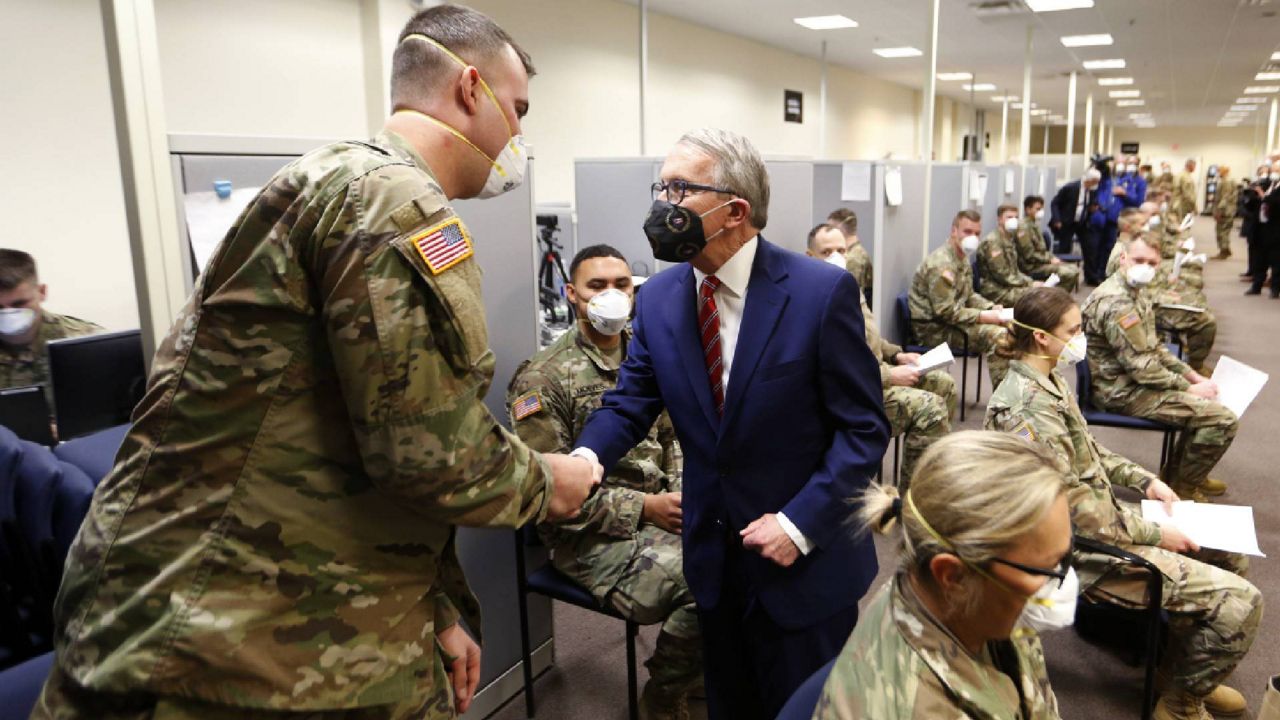With more than 15,000 National Guardsmen and women deployed across the country to aid states with the surging omicron variant, the troops are now also approved to assist in hospitals through new federal funding eligibility announced at the White House on Friday.
The National Guard has already been supporting health care staff in hospitals amid shortages, plus testing and vaccine sites, including more than 14 million vaccinations in the last year. Most of their missions are paid through the Federal Emergency Management Administration (FEMA) and the Department of Defense under emergency COVID relief funds.
FEMA Administrator Deanne Criswell announced Friday that the same federal funding will now cover guardsmen and women’s work in hospitals, too, something that governors have already started to utilize them for.
“With the president's support, I am now directing an expansion of our FEMA policy to permit funding to states who elect to use their National Guard troops to fill these critical support roles in hospitals,” she said.
In a media briefing Thursday, National Guard bureau chief Gen. Daniel Hokanson said there are currently 15,200 troops supporting 49 states and territories at governors’ requests.
The largest number is in Ohio, where Gov. Mike DeWine approved 2,500 guardsmen and women who are working at 48 hospital locations and 16 testing sites.
“Our medical teams are going in and working side by side with the clinical staff as they deal with the surge primarily in their emergency departments,” said Ohio Adjutant Gen. John Harris.
“Those missions range from environmental services, helping turn rooms and clean surfaces. They are helping with patient transport inside the hospitals, moving — just moving patients from A to B to take that load off the clinical staff. They're doing general administrative tasks,” he added. “We find our guardsmen doing all those things.”
One major help for hospitals, Harris said, is the establishment of National Guard-run testing sites nearby hospitals, to stem the flow of people seeking tests away from hospital emergency departments.
And Wisconsin Gov. Tony Evers is deploying 200 soldiers to long-term care facilities in order to free up hospital space, the Milwaukee Journal Sentinel reported this week.
President Joe Biden also announced on Thursday that the Department of Defense plans to ‘surge’ up to another 1,000 military medical personnel to hard-hit states. White House officials said about 3,000 have been deployed since July 1.
The first new wave of federal teams will include 120 people on six teams going to Ohio, Michigan, Rhode Island, New Jersey, New York and New Mexico.
Administrator Criswell said the rest of the personnel will deploy based on states’ requests.
“We started to evaluate what we thought the impacts would be for the omicron variant earlier in December,” she said Friday. “These are the requests that we have right now, and we're filling those based on when [states] can receive them.”
In New York, Gov. Kathy Hochul has called for 400 National Guard soldiers to be trained as emergency medical technicians, said Brigadier General Isabel Smith on Thursday, and the first round of classes will be complete in early February.
“We have provided more than 1.4 million working days supporting COVID mitigation missions so far across the state, including many missions that we never have expected,” Smith said.
The missions have included call centers, contact tracing, alternate care facility set-up, cleaning public buildings, transporting COVID supplies, assembling test kits and food packaging to distribute “54 million meals to communities in need,” Smith said.
In total, about 600 New York National Guard soldiers were on duty as of this week, she added, though 6,500 have been deployed throughout the pandemic.
